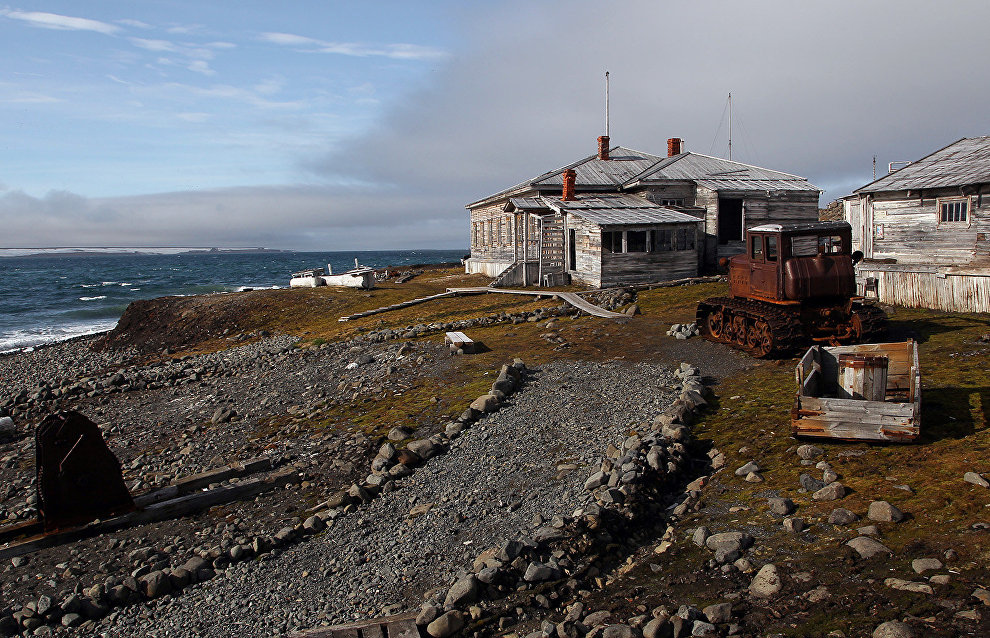Russian Arctic researchers return from spring fieldwork trip to Franz Josef Land
Russian Arctic National Park researchers have come back from the first field expedition of the year, the park's press service reports. In less than two weeks, the expedition traversed the White and Barents seas on The Andrei Osipov motor ship and reached the easternmost island of the Franz Josef Land Archipelago, Graham Bell, and returned to Arkhangelsk after completing work that had been commissioned by the Natural Resources and Environment Ministry.
Ship observation of birds and mammals was part of the work to monitor the environment, said Maria Gavrilo, head of the expedition and the park's deputy director for research.
"An encounter with a bowhead whale swimming along an ice edge has amused us most of all," Gavrilo said. "Earlier, we observed these rare mammals in patches of unfrozen water off the western part of the archipelago while this time we spotted one to the south-east of Franz Josef Land. In the Matusevich Bay off Graham Bell Island we counted seals on the fast ice which could be seen from the ship's bridge. During the molting season at this time of year seals take a rest by their holes when the weather is good. However, this year, the maximum number of seals we've managed to count was down 33.4 percent from the same period in 2013."
The researchers have collected samples of the zooplankton and phytoplankton along the ice edge and in the area of fast ice. This work was carried out as part of the project kicked off in 2014.
The researchers have collected samples of the sea ice, iceberg ice and snow for chemical analysis to identify and analyze the background concentration of persistent organic pollutants. This work was done under the long-standing cooperation agreement with Northern (Arctic) Federal University.
Maria Gavrilo said: "The national park needs this information to understand when and where all this waste comes from, in this case I mean pesticides and polychlorinated biphenyls, which are used in many technological processes, dioxins which are formed by burning many chemical products, and new substances like fluoro-organic products which regularly appear as the result of the development of the chemical industry. The use of many chemicals has long since been banned in the majority of European countries, however, the traces of these products can still be found in the Arctic."
Maria Gavrilo said that they could feel spring approach Franz Josef Land, with air temperatures of about minus 5 degrees Celsius, light winds and sunny spells. "We could already feel the arrival of spring on Franz Josef Land, for example, we spotted snow buntings on Graham Bell, although the shore-fast ice was still there and the entire island was covered with snow," Gavrilo said. "And seabirds which nest in colonies on the archipelago, such as willocks, dovekeys, kittiwakes, fulmars and glaucous gulls, all of them have long since gone there, feeding at sea before starting to build nests. As for loons, brants and sandpipers, they haven't come back to the archipelago yet as they need at least small patches of ground free from snow to nest and feed."
The national park plans to carry out further research on the archipelago in summer.
Russian Arctic National Park is Russia's northernmost and largest protected nature area, which occupies 8.8 million hectares. It is located in the Arkhangelsk Region, sprawling on two polar archipelagoes — in the north of the Novaya Zemlya Archipelago and the Franz Josef Land Archipelago. The park is a habitat for several species listed in Russia's Red Data Book, such as polar bears, Atlantic walruses, narwhals, bowhead whales, ice gulls, Atlantic brants and Novaya Zemlya reindeer.
